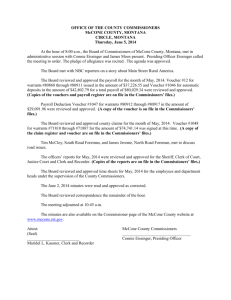a powerpoint of the presentation
advertisement
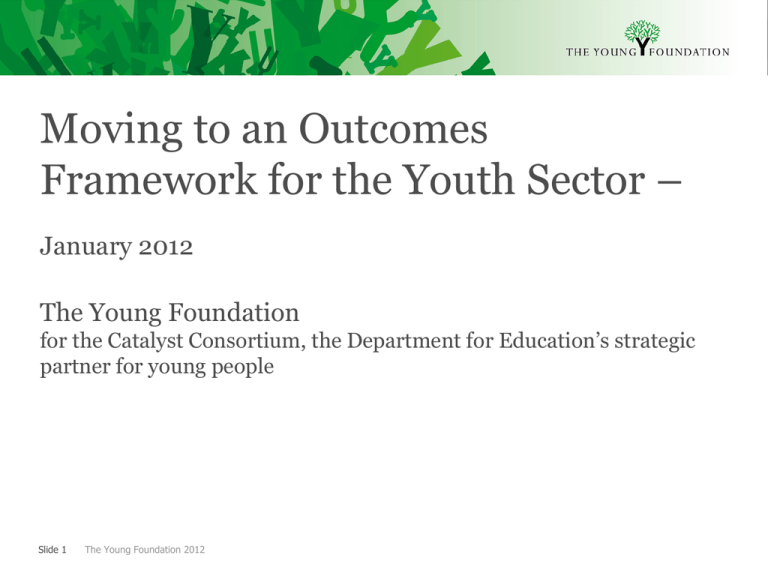
Moving to an Outcomes Framework for the Youth Sector – January 2012 The Young Foundation for the Catalyst Consortium, the Department for Education’s strategic partner for young people Slide 1 The Young Foundation 2012 Introduction Slide 2 The Young Foundation 2012 What’s the problem? Not all youth sector providers are: • Considering their impact as part of their core business; or • Presenting outcomes in a consistent way. The sector lacks a common language and good process for sharing knowledge Not all commissioners are: • Specifying social outcomes in tenders; or • Accounting for social impact in a ‘smart’ way when buying goods and services. Slide 3 The Young Foundation 2012 Not all investors are: • Accounting for social impact in a way that is appropriate for the youth sector when making investment decisions; or • Asking investees to report on their social impact. What’s our ambition for the framework? 1. Accepted by key champions amongst commissioners, providers and social investors 2. Bold, yet flexible 3. Straight forward to use whilst also reasonably robust 4. Based on a coherent ‘theory of change’ 5. Enabling benchmarking of ‘value added’, taking forward knowledge on ‘what works’ 6. Use of a common language to promote consistent measurement of the difference services make for young people Slide 4 The Young Foundation 2012 How might the outcomes framework be used, and by whom? Audience Why might they use the framework? Commissioners (e.g. Local Authorities) • • • Providers (e.g. youth services) • • • • • • Investors (e.g. central government, philanthropists) • • • Slide 5 The Young Foundation 2012 What attributes do they need the framework to have? To target resources effectively to local needs To intelligently commission a range of services which ‘speak’ to one another To share best practice • • • Allows comparability across providers Clear to understand Reliable/evidence based/robust To demonstrate the difference made for young people To articulate value To improve services for young people To grow the evidence base To build consensus To benchmark the difference they make to young people • • • • • Flexible and adaptable to their context Easy to use Affordable Low resource intensity Recognised by central/local government, commissioners and investors To help decide between competing priorities To inform investment decisions To understand the potential of the sector • • • • • Allow comparability across providers Low resource intensity Clear to understand Reliable/evidenced based/robust Sit alongside existing impact measurement tools Outputs of the framework • Typology of outcome areas • Case studies on how outcomes framework can be put into practice • Table highlighting a small number of established tools Slide 6 The Young Foundation 2012 How have we developed an answer? • Focus groups (young people, commissioners, funders etc) • Advisory group (Dartington, London Youth, Substance etc) • Expert panel (Cumbria Youth Alliance, Norfolk County Council etc) • Literature review • Consultation with providers Slide 7 The Young Foundation 2012 Assessment of key outcome areas Slide 8 The Young Foundation 2012 Key to our approach is a link between capabilities, intrinsic and extrinsic outcomes … Increased Protective Factors Personal Development Social Development Educational Development Slide 9 The Young Foundation 2012 Results In Intrinsic Outcomes (individual well-being) Producing Decreased Risk Factors Extrinsic Outcomes (wider social good) … that can be summarised as a relationship between long-term outcomes, interim indicators, social & emotional capabilities Slide 10 The Young Foundation 2012 … which is supported by a strong evidence base … Slide 11 The Young Foundation 2012 At the heart of the Outcomes Framework are seven clusters of capabilities Slide 12 The Young Foundation 2012 Using the Outcomes Framework Slide 13 The Young Foundation 2012 Stages in using the Framework Slide 14 The Young Foundation 2012 Case study: provider working with victims of bullying Slide 15 The Young Foundation 2012 Case study: provider working with victims of bullying Slide 16 The Young Foundation 2012 Matrix of tools Slide 17 The Young Foundation 2012 Approach to assessing tools • We have collated information on commonly-used and referenced measurement tools and techniques • Information includes an overview of which clusters are covered; the cost of using the tool; and the robustness of the underlying evidence base Slide 18 The Young Foundation 2012 Provisional version (not complete) Slide 19 The Young Foundation 2012 Contact Neil Reeder neil.reeder@youngfoundation.org Bethia McNeil bethia.mcneil@youngfoundation.org Slide 20 The Young Foundation 2012
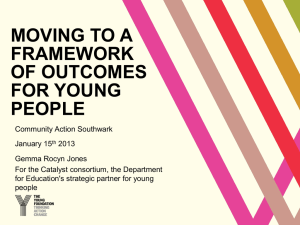
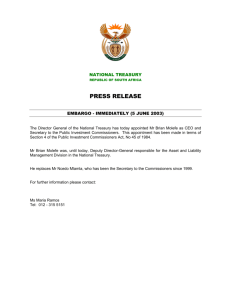
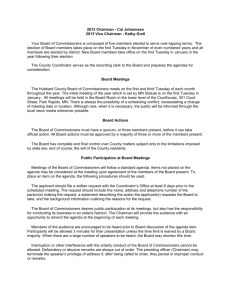
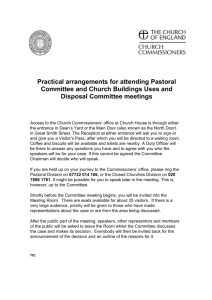
![Public Investment Commissioners Amendment Act [No. 7 of 1999]](http://s3.studylib.net/store/data/008233454_1-9add9440dc9676da18ea4940575b5f2a-300x300.png)
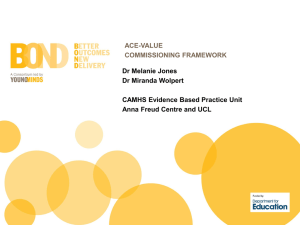
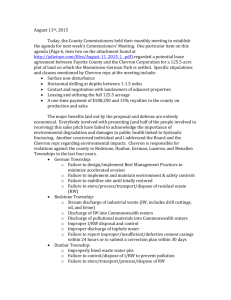
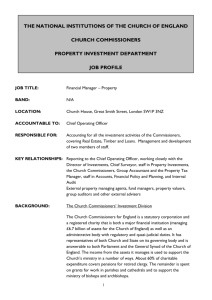
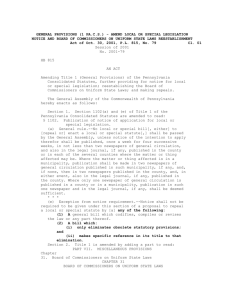
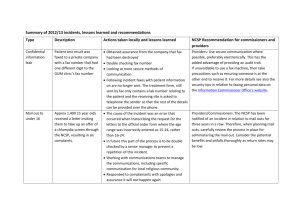
![Public Investment Commissioners Amendment Bill [B8-99]](http://s3.studylib.net/store/data/008233452_1-b3730bddeeab153d9458acaecd0a6154-300x300.png)
